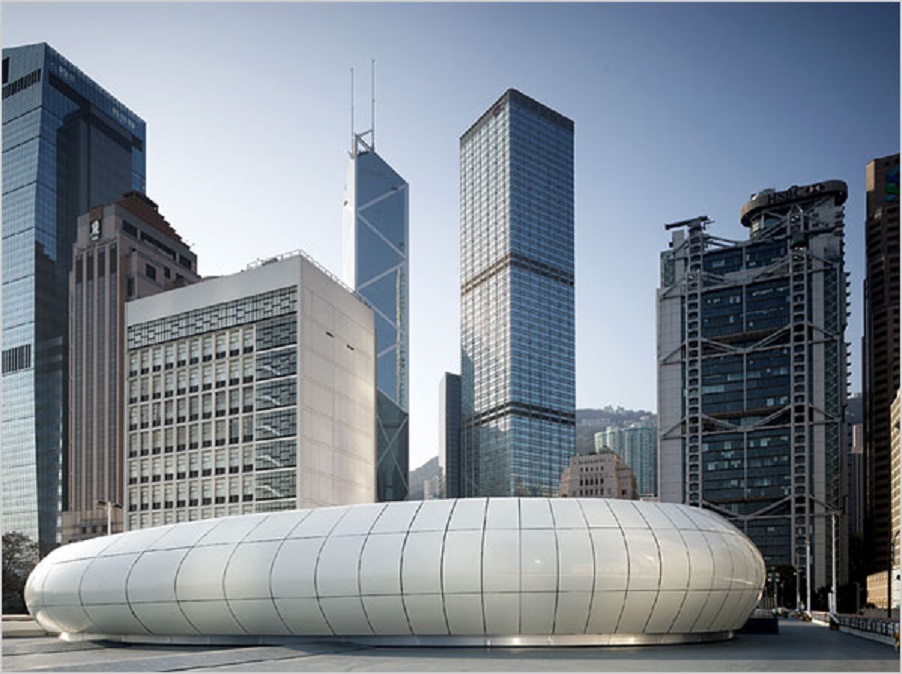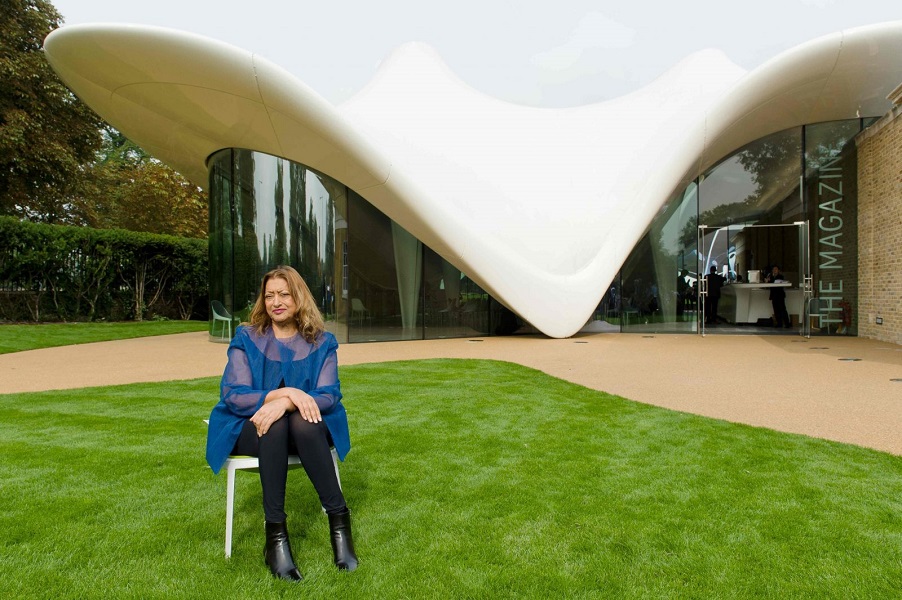Zaha Hadid, the world’s most famous female architect who attracted plaudits for works of sweeping curves and controversy for huge cost overruns, died yesterday at the age of 65, her company said.
Iraqi-British Hadid, the first woman to win the prestigious Pritzker Prize for architecture, was best known for her designs for the Guangzhou Opera House in China and the aquatics centre used in the 2012 London Olympics.
But she faced criticism last year after her futuristic USD2 billion (HKD14.9 billion) design for the 2020 Tokyo Olympic stadium was scrapped amid spiralling costs and complaints over the design.
Born in Baghdad in 1950, where her father was a politician, Hadid forged a career in the male-dominated world of architecture bringing her curvaceous, radical designs to life in glass, steel and concrete.
“It is with great sadness that Zaha Hadid Architects have confirmed that Dame Zaha Hadid died suddenly in Miami in the early hours of this morning,” her firm said in a statement, adding that she had suffered a heart attack after contracting bronchitis this week.
Iraqi Prime Minister Haider al-Abadi paid tribute to Hadid describing her death as a loss for the “whole world”.
She “served the world through her creativity, and in losing her, the whole world has lost one of the great energies that served the community”, Abadi said in a statement.
Hadid’s other notable works included the Italian National Museum of 21st Century Arts in Rome, the Heydar Aliyev Centre in Baku and the Rosenthal Center for Contemporary Art in Cincinnati.
“I believe that the complexities and dynamism of contemporary life cannot be cast into the simple platonic forms provided by the classical canon,” she said in her speech accepting the Pritzker Prize, the most prestigious in architecture, in 2004.
“The initial sense of abstractness and strangeness is unavoidable and not a sign of personal wilfulness.”
Talent and determination
Hadid studied maths at the American University of Beirut before going on to study at the prestigious Architecture Association in London, where her professors included leading Dutch architect Rem Koolhaas.
 Hadid’s winning design for the Hong Kong Peak Leisure Club (1983), which was never built. Photo: Zaha Hadid Architects
Hadid’s winning design for the Hong Kong Peak Leisure Club (1983), which was never built. Photo: Zaha Hadid Architects
She established her own practice in London, Zaha Hadid Associates, in 1979 but it took some time before she got a building constructed. The first was a fire station in Weil Am Rhein, Germany, in 1993.
In 1994, she won a competition to construct an opera house in the Welsh capital, Cardiff. However, the design was eventually scrapped amid fierce local opposition.
“Honestly, we were like a leper colony here after Cardiff,” Hadid said in an Observer newspaper interview in 2008. “For about six years after Cardiff, we had no work and all the money I made was through teaching or lecturing or competitions.”
But by the turn of the millennium, however, her practice was taking off and she became one of the world’s most famous architects.
 Hadid’s Chanel Mobile Art Pavilion (2008), which debuted on the old Star Ferry car park in Central
Hadid’s Chanel Mobile Art Pavilion (2008), which debuted on the old Star Ferry car park in Central
She was twice awarded Britain’s top architecture award, the RIBA Stirling Prize, in 2010 and 2011.
Queen Elizabeth II honoured her with a damehood in 2012 and only last month she was awarded Britain’s Royal Gold Medal, joining Frank Gehry, Norman Foster and Frank Lloyd Wright in receiving the architectural honour.

PolyU’s Jockey Club Innovation Tower (2013), Hadid’s first permanent work in Hong Kong. Photo: Wikipedia
Hadid had a reputation as a sometimes daunting individual.
Last year, she walked out of a BBC radio interview after angrily denying there had been deaths of construction workers on the site of a stadium she designed for the 2022 football World Cup in Qatar.
But her talent and determination drew praise from peers and the public alike.
“We are deeply saddened by the death of Zaha Hadid, the world of architecture loses a great,” the 2022 World Cup organising committee wrote on Twitter.
“Surely her work is special,” renowned architect Peter Cook said on presenting the Royal Gold Medal. “For three decades now, she has ventured where few would dare.
“How lucky we are to have her in London,” he added. “Our heroine.”
Words: AFP
Got a tip? Send it to us at hongkong@coconuts.co



